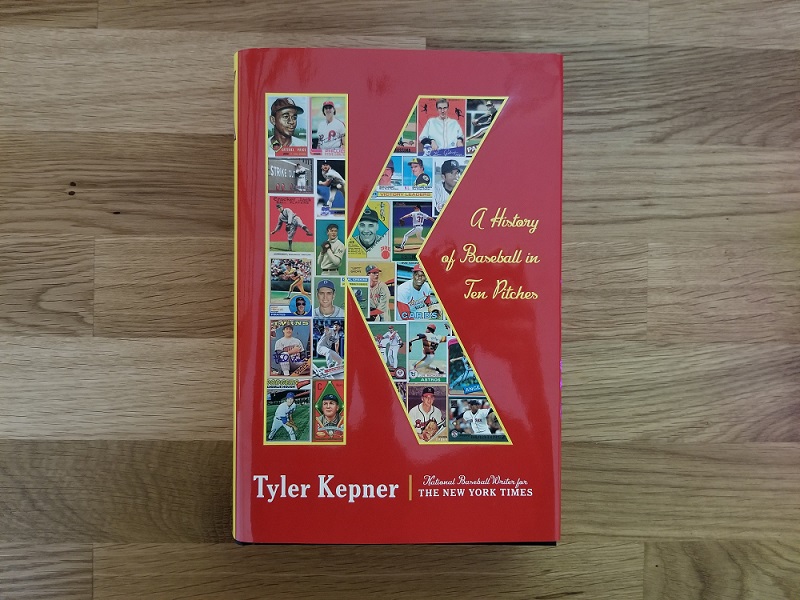7 consensus reasons why baseball is dying + 7 ornery rebuttals
by Fred Hofstetter on January 8, 2020The reasons for baseball's impending doom are full of misnomers, contradictions and false presumptions. Here's why baseball is not a dying sport in America in 2020.
Baseball keeps dying. Over and over again. Baseball has a long history of repetitious death.1 There has forever existed a cadre of naysayers confident in its impending doom.
Why? Theories echo and reverberate through the halls of history. The sport is boring. Attendance and popularity are declining. There are too many home runs. There aren’t enough home runs. There isn’t as much small ball. Greed corrupts it. The world has evolved past it. Competing sports are more exciting. Players don’t care as much as they used to. Players are getting too good. Players are choosing other sports. Children lose patience for it. Children are drawn to stars in other sports. It’s too expensive to go to games.
Things just aren’t how they used to be.
The current climate features a familiar temperature with distinctions on the fringes. Listed below are the curmudgeon’s favorite explanations for baseball’s decline in 2018, 2019, into 2020 and beyond.
1. Baseball is too slow and takes too long.
The long-time moan from the “baseball is boring” crowd.
The time it takes to get through a full baseball game continues to rise. Teams are discovering 1) the benefits of patience at the plate on the offensive side 2) the benefits of earning strikeouts vs. pitching to contact on the pitching side. Foul balls are up2, pitches per game are up3, pitchers per game are up4, and the result is a longer game on average.
Critics will often cite a single year in the past as their favorite point of comparison, which ought to inspire the suspicion of any half-critical thinker. You’ll see this kind of thing:
In 1948 — when Joe DiMaggio, Ted Williams and Jackie Robinson were on the field — an average 9-inning game lasted 2 hours and 15 minutes. Today, it takes more than 3 hours.5
This has it all:
- Apples and oranges. The reference to a year representing an entirely different age in the game.
- Nostalgia. The casual reference to the mythical figures of the past, hearkening to the “better days” as if all-time great players don’t exist anymore.
- Carefully crafted comparison. A precise value for the past figure and a fuzzy estimation of the current figure implying a limitless ceiling.
There is truth amid the caterwauling:
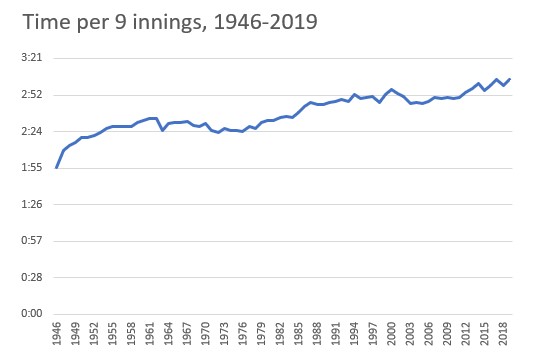
Courtesy of Baseball Reference6.
MLB’s 2018 measures to speed up the pace of play couldn’t stop time per 9 innings from reaching a new high in 2019 – at an average of 3 hours and 10 minutes.
Yes, games are getting longer.
Rebuttal
Why is this bad? The cemented narrative is that long = bad. Isn’t there something odd about a baseball fan complaining about too much baseball?
The obvious counterargument: we’re not talking about more baseball – we’re talking about all the not-baseball between the baseball.
I’ll concede a few things can get on my nerves:
- Commercial breaks
- Mound visits after signs get crossed up
- Replay reviews
- Rain delays
- Deliberately long manager strolls to the mound to fetch a fresh arm
- Bickering and fake fights about unwritten rules
- Guys scratching themselves
- The awkward pause of miscommunication before time is called
But there are also a few things I really like:
- More baseball
- The spirit of leisure
- In-game strategy
- Not having to watch intensely 100% of the time
- Circumstantial suspense, intrigue, intensity
- The swelling anticipation of a crowd of 40,000
- Position players pitching
- Epic, drawn-out duels between the world’s best athletes
- Specialization; increased opportunity for niche folk heroes
- People evolving to make things work better
- Actually…all of that stuff in the “occasionally on my nerves” list too
I’d argue all that not-baseball stuff between the baseball seen as a drag is baseball stuff. And if you don’t think it’s baseball stuff you don’t know what baseball is.
Consider this example of baseball stuff from Jim Bouton’s Ball Four7:
An outfield game is making up singer-and-actor baseball teams purely on the sound of their names. Example – Panamanian. Good speed, great arm, temperamental: shortstop Jose Greco. Or big hard-hitting first baseman; strong, silent type: Vaughn Monroe. And centerfielder, showboat, spends all his money on cars, big ladies man, flashy dresser, drives in 75 runs a year, none of them in the clutch: Duke Ellington. Finally – great pitcher, 20-game winner five years in a row, class guy, friendly with writers and fans alike; stuff is good, not overpowering, but he’s smart, has great control and curve ball, moves the ball around: Nat King Cole.
If you think this is a silly game, you haven’t stood around in the outfield much.
Baseball’s defining trait is its embrace of a leisurely, meandering pace. Football is a violent battle. Basketball is frenetic. Soccer is non-stop running. Baseball is not those sports and that’s the point.
Baseball is the game where you can get up, stretch, go grab a beer, chit chat with the wife/husband, grab the mail, take the garbage out, come back a half inning later and it’s OK. The game’s still there. It’s always there. What’s the hurry?
2. There are too many breaks in the action.
This pairs with #1 but there is subtle differentiation. The concern is the frequent pauses in action during the too-long game.

Courtesy of Fangraphs8
This won’t surprise anyone who follows the game closely. The general demographic change trending into 2020:
- Patient hitters are replacing free swingers
- Hard-throwing strikeout-getters are replacing pitch-to-contact types
Pitchers who throw harder tend to take more time between pitches.9 Smart hitters take more pitches. There are more pitches with more time between them. The result is a rising average of time between pitches.
MLB has tried to implement measures to speed up the between-pitch time seemingly without much success.10 It’s possible they’ve managed to avoid much slower play. But the feeling is they’re just not enforcing pace of play rules aggressively.
Rebuttal
As described in rebuttal #1, there is charm in the pauses. A rhythm. A responsive musical melody speaking the language of the game. The deep breath after every pitch allows us to gather ourselves and contemplate how the circumstances have changed. Every pitch changes the odds. Baseball gives us the opportunity to perceive it.
We are witnessing a trade-off en masse. Trading free swinging for patience. Contact for power. Bunts for walks. Sinkers for sliders. Low-value hitting for high-value hitting. Low-value pitching for high-value pitching. Run generation gets better. Run prevention gets better. The better each side gets, the better the competition. More great hitters. More great pitchers. Isn’t that what we want?
The trade-off is pace for quality. And nothing about the baseball spirit is frenetic. Take a breath. Turn up the speakers and listen to the sounds. Relish the couple extra average seconds and savor the game’s improvement borne of minimal sacrifice.
If the length of the game and the breaks in the action really bother you maybe 1) you’re doing it wrong 2) you don’t actually like baseball that much.
3. Baseball popularity is declining via attendance, viewership and youth participation.
Attendance. Danielle Allentuck and Kevin Draper at The New York Times reported a 2019 dip in attendance, following a long term trend that took a turn for the worse after the recession hit in 2008.11 Here are some of the scintillating descriptions you’ll find:
- “A million more” empty seats
- 12-year slide in attendance
- 14 percent lower than 2007
Teams have been forced to experiment with all sorts of different schemes to get more people into the ballpark. Conventional wisdom says ticket sales = how much people like baseball.
Youth popularity. The Sports Fitness & Industry Association reported a 3-million kid increase in baseball and softball (in the US) from 2013-2018.12 Both football and soccer decreased over this same period.
TV viewership. Nielsen data provided by FOX Sports reported a 2% increase in viewership in 2019 vs. 2018.13 In 12 regional sports networks the local MLB team ranked #1 in prime-time.
Rebuttal
In terms of youth participation and TV viewership, it appears there is nothing to rebut. There just isn’t any death to be found there.
Here’s the real take on attendance, again from Allentuck an Draper:
Ticket sales, long the bread and butter for the sport, are no longer the central driver of the business at a time when the sport’s digital business is ascendant.
The loss in ticket sales is being more than offset:
Meanwhile, fees from baseball media rights are growing at a much faster rate. That explains how revenue can soar while attendance plummets. Baseball’s new television agreement with Fox included a 39 percent increase over the previous deal.
A small dip in attendance does not spell doom for baseball. The youth is there. The viewership is there. The attention is there.
Never before has sitting at home watching baseball been a better idea. TVs are getting bigger, sharper and cheaper. Couches are getting more comfortable and cheaper. A dog and a beer from your local grocer is cheap. MLB ticket prices steadily rise.14
Investors in MLB stadiums failed to predict the market correctly and overestimated the future number of butts in seats. MLB appears hesitant to lower aggregate prices commensurate with the drop in demand. This is the case of a market transitioning the allocation of its resources. It isn’t death.
Let’s pretend attendance, viewership and participation is down and the game is dying because everyone’s scratching themselves too slowly, taking pitches and not bunting anymore. Even then, the raw quantity of buyers/attenders/players can’t paint the full picture. You could argue, say, the value of 1 die hard fan is worth 5 fairweathers. Adding 1 die hard for every 2 fairweathers could have significant benefits with the appearance of a loss.
Empty seats look bad. It signals failure. But not the type your gut reaction tells you. The unseen is the story here. Nothing in the unseen smells of death.
4. There’s no star power.
Many writers propose the lack of star power at the professional and college levels hinder baseball’s ability to compete with sports like football and basketball—in which individuals of exceptional talent can more easily gather an increasing share of attention.
Juliette Love from the New York Times recently noted baseball’s relative inability to promote its biggest stars, comparing Mike Trout to Tom Brady and Lebron James.15
According to YouGov’s ratings of active sports personalities, 91 percent of Americans have heard of LeBron James and 88 percent have heard of Tom Brady, but only 43 percent have heard of Mike Trout of the Los Angeles Angels, baseball’s best player.
This is real. Regular people don’t really know baseball players, especially those on teams outside their city or state. Not even the good ones.
Baseball players come and go. Few stick around for more than a few years at a time. A baseball team’s best player can go unnoticed for a half hour or more. In the case of pitchers? Sometimes several days.
Mike Trout doesn’t come up around the water cooler. Tom Brady and Lebron James sure do. Love notes each athlete’s exposure to a national audience:
- 100% of U.S. counties air at least a quarter of Tom Brady’s games.
- Lebron James – 98%.
- Mike Trout – 1%.
The responses you’ll find in this conversation inspired by Jeremy Frank speak to Love’s next point—that baseball is local:
Kinda curious: Ask someone who doesn’t watch/pay attention to baseball to try and name 3 active MLB players.
Respond with who they name, if any at all
— Jeremy Frank (@MLBRandomStats) September 18, 2019
This doesn’t look good for baseball defenders if the premise of star power = good, name recognition = not death is sound.
I’m not so sure.
Rebuttal
A dearth of frenetic obsessors allured by dull dominance, wholly bereft of understanding with minimal reverence for baseball is not a problem. Give me one passionate devotee of the multivariate beauty of the game in exchange for a hundred spastic featherweights irrepressibly attracted to the nearest bright light.
Baseball star power is Craig Counsell’s outrageous batting stance; Nomar Garciaparra’s batter’s box routine; Yasiel Puig’s bat-licking; Jose Bautista’s bat flip; Ozzie the Wizard’s human flip; Max Scherzer’s fierce mound-top soliloquies.
Baseball’s star power is an amalgamation of idiosyncrasies, largely insulated from cult-of-personality characters incapable of stealing the spotlight from the game itself. Sure, Tom Brady and Lebron James are more widely known than Mike Trout. But ask yourself—how often do conversations about Tom Brady or Lebron James end with the sentiment Man, I am sick and tired of ESPN obsessing over these guys…? Is that the star power we’re supposed to miss?
Baseball’s lack of individual, centralized star power is one of its finest traits and a significant positive differentiator from its competitors.
5. There are too many home runs.
This one is getting more popular as home run rates continue to rise. Barry Svrluga from the Washington Post says the home run is “eating the game alive”.16 It’s eating all the singles, doubles, triples, stolen bases, double plays, bunts, hit-and-runs, infield hits and sacrifices that make the game truly great. The “best version of baseball” is dead and the home run is “slowly killing” it.
Svrluga blames the ball. The conniving commissioner tampered with the baseballs and now every time the ball meets the bat it’s a home run. Because money.
For zealots who preach the death of baseball, it’s kill or be killed:
Fix the baseball not so much to kill the home run, but to bring back the fascinating little plays that make the game more interesting.
Rebuttal
Home runs are the peak baseball experience. A mega-athlete throwing a ball harder than any normal human. A mega-athlete swinging a bat harder than any normal human. Their collision is epic, awe-inspiring, and draws the loudest cheers 100% of the time.
Worse baseball is not interesting. Bunt singles, productive outs and texas leaguers are charming like an infant curiously struggling with scotch tape binding their fingers together is charming.
Enjoy the home runs while they’re happening. When the trend swings the other way…we wind up with #6.
6. There aren’t enough home runs.
Even if #4 was “fixed,” there would be a sizable group bemoaning the lack of home runs that’s killing baseball. The cynical side of me believes it would be the same group.
Here’s a good one. This video was published in October of 2014. Not that long ago:
Kids wish for home runs every time. A lack of home runs is bad, right? How boring. If only the circumstances were the exact opposite, then everything would be great.
Rebuttal
There isn’t a “right” amount of home runs. These trends are temporary. In 2014 home runs seemed down. In 2019 they’re up.
Home runs are great. They’re great in small quantities, where each has increased meaning and value. They’re great in large quantities, where each is fun because home runs are fun.
Again – the question: do you like baseball? If you find yourself only able to tolerate a precise ratio of pitches per home run, you might not like baseball.
For the “baseball is dead” crowd, home runs can never win. Please – turn the channel and stop bothering people who enjoy the game.
7. Millenials.
The youths. Punks. The little brats in the video above (OK, those aren’t millenials. But they might as well be.). Millenials are too busy sipping lattes and sniffing their summer scarves in their urban gardens to bother streaming a baseball game on their smartphones. Millenials are impulsive, pretentious and have no patience to sit through a slow, traditional game vividly reminding them of their spitefully supportive upper middle class parents and their sickening backwards opinions on gender roles.
The Star Tribune cites the current demographics across baseball, football, basketball and hockey to paint of a picture of a sport losing the young audience.17
Baseball still is the second-most-popular sport behind the NFL…but it is losing ground with younger fans compared to older age groups. The NBA is gaining ground on baseball, especially in the youngest demographics.
But baseball is taking its cue from the Silicon Valley elites to fix the problem. Big baseball knows millenials are suckers for communities:
But baseball would like consumers to have the same relationship to its game as they do to other sports. Sports are a communal experience. People watch games and comment online with friends and strangers alike.
Manfred said stadiums have focused on creating more social spaces for fans to congregate and experience the game atmosphere without being glued to their seats for nine innings.
Rebuttal
We’ve seen that youth participation is doing just fine. Millenial parents across the country who finally pop out a couple rascals as 35 dreams of watching them scrabble around trying to field grounders, run the wrong way on the bases and completely whiff it in tee ball. It’s hilarious – a foolproof lesson in humility for a group of cocky little monsters.
American millenials grew up with boomer parents and grandparents, equally bred to feel all the same warm fuzzies when April rolls around, grass starts growing and you hear those first few pops of the mitt.
A life lived largely in dependency with manufactured hardships doesn’t make baseball any less fun. Millenials aren’t killing anything and that includes baseball.
Baseball will be dead when people are dead.
The reasons for baseball’s death will fluctuate and evolve every year until we all meet our makers. Baseball in 2020 is every bit as dead as it was in 1904. Or 1987. Or 1963.
So no. Baseball is not dying.

References & notes
| 1 | Emma Baccellieri, “A Brief History of the Many Times Baseball Has Died” Sports Illustrated. Aug 29 2019. Link. This article is a joy to read. Emma digs up some fantastic examples of baseball doomsayers from the past 100+ years. “A quarter century ago, this sport was simple, clean, easily enjoyed, free of selfishness and guile. Today, alas! it has fallen into evil ways, become the tool of greed, the victim of hucksters.” That was written in 1901. Hilarious. |
| 2 | Travis Sawchik, “Foul Balls Are The Pace-Of-Play Problem Nobody’s Talking About” FiveThirtyEight. Feb 21 2019. Link. |
| 3 | Fangraphs. Accessed Jan 4, 2020. Link. Fangraphs total pitches data only goes back to 2002. But 2019 saw more pitches than any other in the 21st century and it’s trending up. |
| 4 | Baseball Reference. Accessed Jan 4, 2020. Link. |
| 5 | Scott Simon, “Opinion: How America’s Pastime Became So Slow” NPR. March 23 2019. Link. I know this kind of thing is borderline trolling and transparent nerd-bait. But this opinion piece concisely encapsulates the general angst you get from people who don’t care enough about baseball to consider anything beyond their most base emotions. I like this line: “It’s not just more commercials and on-field promotions. It’s increased analytics.” |
| 6 | Accessed Jan 4, 2020. Link. |
| 7 | Jim Bouton, Ball Four (Nashville, TN, Turner Publishing Company, 1970). 165-166. |
| 8 | Fangraphs. Accessed Jan 4, 2020. Link. It’s the “Pace” column on the far right. |
| 9 | Rob Arthur, “Pitchers are Slowing Down to Speed Up” FiveThirtyEight. May 25 2017. Link. |
| 10 | MLB.com, “Pace of Play.” Accessed Jan 4, 2020. Link. |
| 11 | Danielle Allentuck and Kevin Draper, “Baseball Saw a Million More Empty Seats. Does it Matter?” The New York Times. Sep 29 2019. Link. |
| 12 | ESPN News Services, “Survey: Youth baseball participation on the rise” Aug 23, 2019. Link. |
| 13 | Maury Brown, “2019 MLB Regional TV Ratings In Prime Time Remain Solid” Forbes. Oct 15, 2019. Link. |
| 14 | Christina Gough, “Major League Baseball average ticket price from 2006 to 2019 (in U.S. dollars)*” statista. Jul 4, 2019. Link. |
| 15 | Juliette Love, “How Popular Is Baseball, Really?” The New York Times. Oct 22, 2019. Link. |
| 16 | Barry Svrluga, “Home runs are slowly killing baseball, and something needs to be done” The Washington Post. Jul 9, 2019. Link. |
| 17 | Chris Hine, “Major League Baseball fans turning gray while millenials tuning out” Star Tribune. July 16, 2018. Link. |
Recommended reading
You didn’t ask. But here are a few baseball books I bought recently and they’re great. If you like baseball and like to read about baseball you should have these.
James and Neyer collaborate for this handy historical compendium on baseball pitches and their practitioners. There are a few hundred pages’ worth of quickfire summary of the repertoire of pitchers both legendary and obscure.
A superb combination of encyclopedic comprehensiveness with the conversational feel like shooting the breeze over a couple beers. You’ll find yourself regularly plucking it off the shelf.
The bible of baseball books. James’ epic historical baseball abstract is a search engine on your shelf. Also—ensure 1) your shelf brackets are mounted on studs or 2) you place the book in a ground storage unit. This is a cinderblock.
The volume contains just about everything you would want to know about the history of baseball, featuring chapters devoted to each decade from the 1870s through the 1990s.
Sure to become a classic, must-own. This book exhibits true joy for the game, featuring memorable anecdotes and quotes from some of the game’s best. Chapters are sorted by pitch type, offering peaceful periodic pleasure for baseball readers with small windows of free time.
Simultaneously a wonderful repository of information and a creatively weaved story of the game we revere. This book is delightful.
* Editor’s ask: if you’re interested in purchasing any of these books, please consider clicking the big gold “buy” button before your purchase. It really helps me keep this website ad and obnoxious-pop-up free.
The latest articles
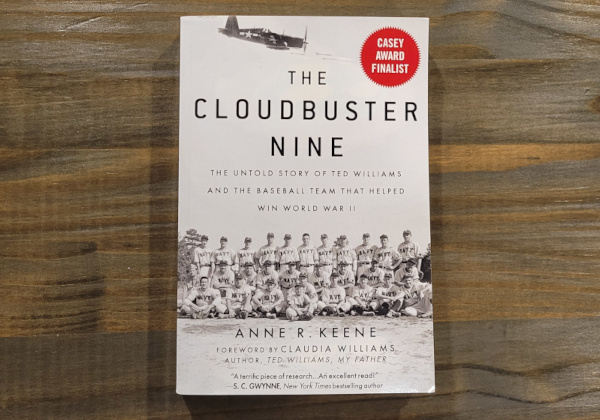
Book Review: The Cloudbuster Nine - by Anne R. Keene
by Fred Hofstetter on January 30, 2024Keene's comprehensive book tells several stories behind the V-5 Pre-Flight School in Chapel Hill, North Carolina: home to one of the rarest, greatest baseball teams in American history.
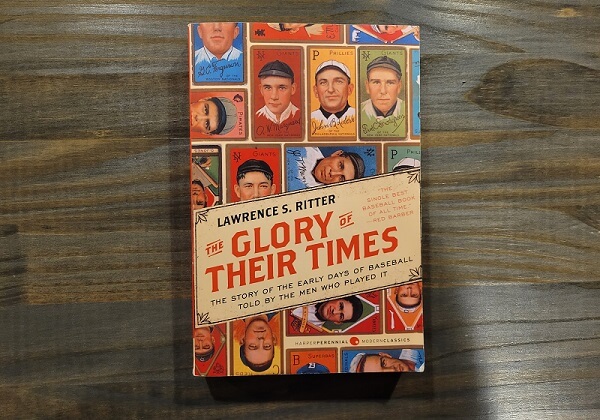
Book Review: The Glory of Their Times
by Fred Hofstetter on February 11, 2023There's good reason why The Glory of Their Times appears on every "best baseball book of all time" list you'll find anywhere.
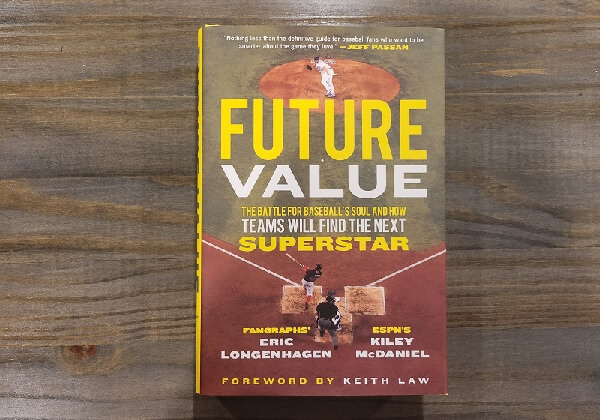
Book Review: Future Value - Eric Longenhagen & Kiley McDaniel
by Fred Hofstetter on January 8, 2023Discover how amateur and pro baseball scouting is done, how departments are built, and how organizations find talent in Future Value.
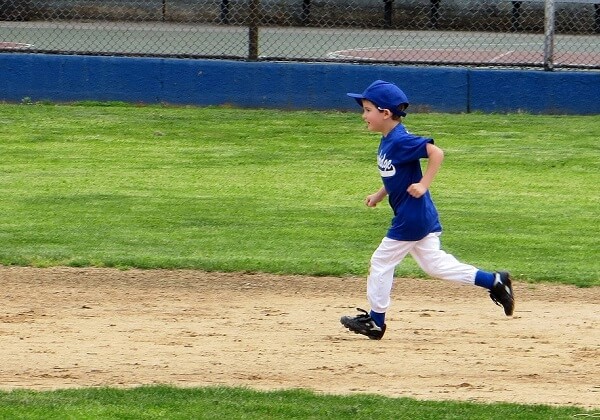
Baseball players wear hats because wearing a hat is correct
by Fred Hofstetter on April 9, 2022Practicality explains why baseball players may want to wear a billed cap. But why does every player always wear a hat? Because it’s the right thing to do.




